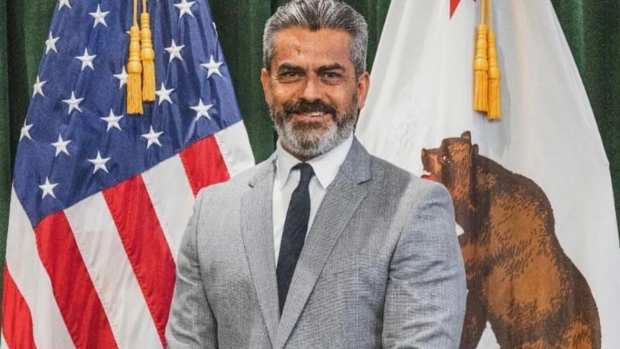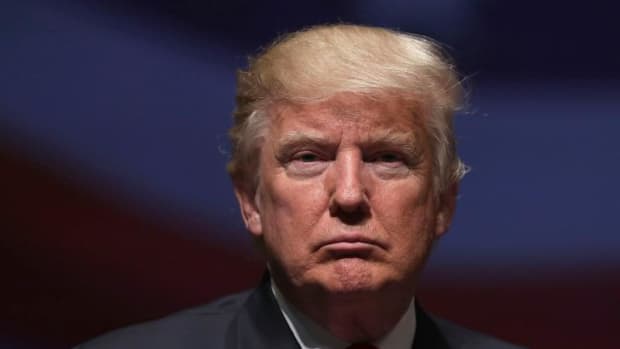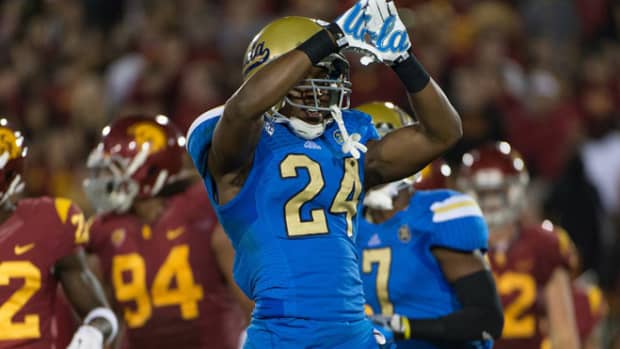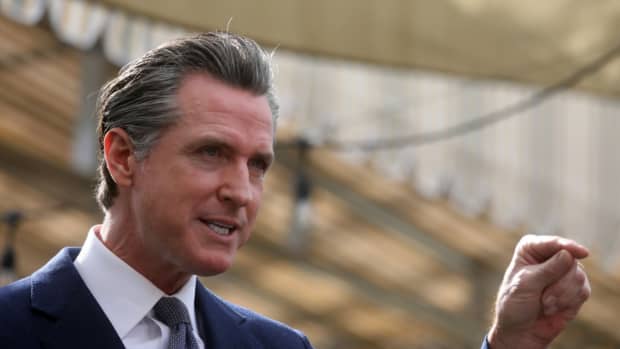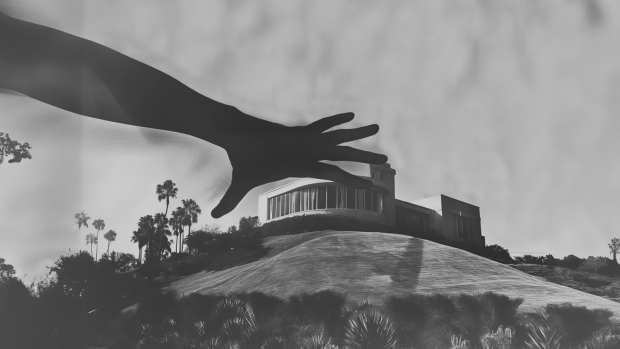'Rustin' Q&A: Director George C. Wolfe on Discovering and Depicting Gay Civil Rights Leader Bayard Rustin

Bayard Rustin (black and white photos) between a still from the Netflix film and director George C. Wolfe
(Photo credits: see below)
GEORGE C. WOLFE has never shied away from difficult characters as a playwright and director across film, television and stage. Rustin, now streaming on Netflix after a limited theatrical release, slots perfectly into a resume that includes directing the stage productions of Angels in America and Bring in ’da Noise, Bring in ’da Funk (for which he won Tony Awards), as well as movies like The Immortal Life of Henrietta Lacks and Ma Rainey’s Black Bottom.
Rustin follows the central architect of 1963’s March on Washington, one of the largest peaceful demonstrations in U.S. history and a key catalyst to the passage of the Civil Rights Act of 1964. It featured Martin Luther King Jr.’s iconic “I Have a Dream” speech. The inclusion of King in the march, however, was fraught with interpersonal complications involving his old friend Bayard Rustin.

Bayard Rustin was a spokesman for the Citywide Committee for Integrated Schools.
(Photo credit: Patrick A. Burns / New York Times Co. / Getty Images)
In 1963, Rustin didn’t have the immediate makings of a revolutionary — he was a former communist and an openly gay man. But his passion, organization and people skills fused together for a seminal historical moment.
From a script written by Julian Breece (When They See Us) and Oscar winner Dustin Lance Black (Milk), produced by Barack and Michelle Obama’s Higher Ground Productions and starring Colman Domingo as Rustin, the movie is one of Netflix’s top awards contenders this year.
Wolfe discusses his career and how he makes true stories spring to life on screen.
How would you define yourself?
I would first and foremost call myself a storyteller, regardless of whatever the medium is — theater or film or TV or playwriting. I am from the South; I’m from Frankfort, Kentucky. I think that’s a very integral part of who I am — because I was born at a time where there was a big, giant “C” on my birth certificate for “colored,” and my town was segregated. So I was born with an acute awareness that I had to define myself because other people’s definition of me was too small. … So I consider myself a storyteller who is in defiance of other people’s limited view of who I am.
When is the first time you remember telling a story?
Strangely enough, I would do what we would call “directing.” When we were supposed to take a nap after lunch during grade school, I remember pulling people aside and I [would tell them], “You do this, you do this and you do that.” So I told stories through people, and that’s my initial memory of what I would call storytelling. I was always a director — or some might say controlling. My first memory is [when] my grandfather, George Wolfe, whom I was named after, would build up blocks. And then I would knock them down and he would applaud. … I think there is something in knocking things down and getting applause for that, which is fascinating — in dismantling things.
So much of the work you’ve done has to do with people who did dismantle the system in one way or another. Clearly that intersects with this movie: There was this incredible, charismatic gay man behind the March on Washington who should get more attention. How did you come upon Rustin?
I probably tangentially learned about him somewhere in college. I went to Pomona College, and there was a period where Angela Davis taught a class, and that may have been the first time his name came up. And then I helped to create a museum in Atlanta called the National Center for Civil and Human Rights, and that’s when I did a really deep dive into him and the March on Washington because I was hired, in essence, to sort of stage the Civil Rights Movement for this museum. There was a conscious decision in staging that to have Martin Luther King be a narrative voice, as opposed to the center of the March. So you can find out about other people like Jo Ann Robinson, who was the organizational brain behind the Montgomery Bus Boycott, or Bayard Rustin, who was the organizational brain behind the March on Washington.
Then, at one point, I was going to work on a documentary, but it didn’t happen … and then [film producer] Bruce Cohen called me up and asked if I’d be interested in writing or directing [Rustin]. … And I was finishing up something, so I said I could get involved directorially.

Jeffrey Mackenzie Jordan (left) as Courtney and Colman Domingo as Bayard Rustin.
(Photo credit: Parrish Lewis / Netflix)
How do you go about presenting Rustin as a gay man who’s accessible to a mass audience?
Well, that’s not an ambition. How do you water down orange juice? You don’t. You make it as vibrant, as dynamic, as you possibly can. The more real it is, the more textured it is, the more they begin to see themselves. Therefore, you’re not looking at an archetype, you’re looking at a human being.
Everybody knows Martin Luther King from “I Have a Dream,” and if you [know] a little bit more, then you know about the Montgomery Bus Boycott. But very few people know that he got a C+ in public speaking, or that at one point, he went away to school in the North and fell in love with a white woman, or that [his wife] Coretta wanted to be an opera singer. So everybody has all these secrets and textures. It’s when we see the complications of them as human beings, I believe, that we begin to understand what we are also capable of doing.

Bayard Rustin speaking before a demonstration in 1964.
(Photo credit: Stocktrek Images Inc. / Alamy Stock)
What do you hope audiences walk away with when the closing credits hit?
I hope they are inspired by this human being who was astonishing America. Hopefully they are excited by a whole bunch of other Americans they’ve never heard of, like Dr. Anna Arnold Hedgeman and Ella Baker — these amazing, powerful, commanding people who made it their lives' cause to make America more like America. And I hope that they are empowered, excited and moved by that. I hope, particularly at a time when people are trying to diminish, that it arouses inside of them a veracity to protect history to make sure every bit of history is shared and treasured and valued in a very, very deep way.
This story first appeared in Los Angeles magazine's December 2023 issue, now on sale at Barnes & Nobles locations across the country and other newsstands. Click here to subscribe today.



